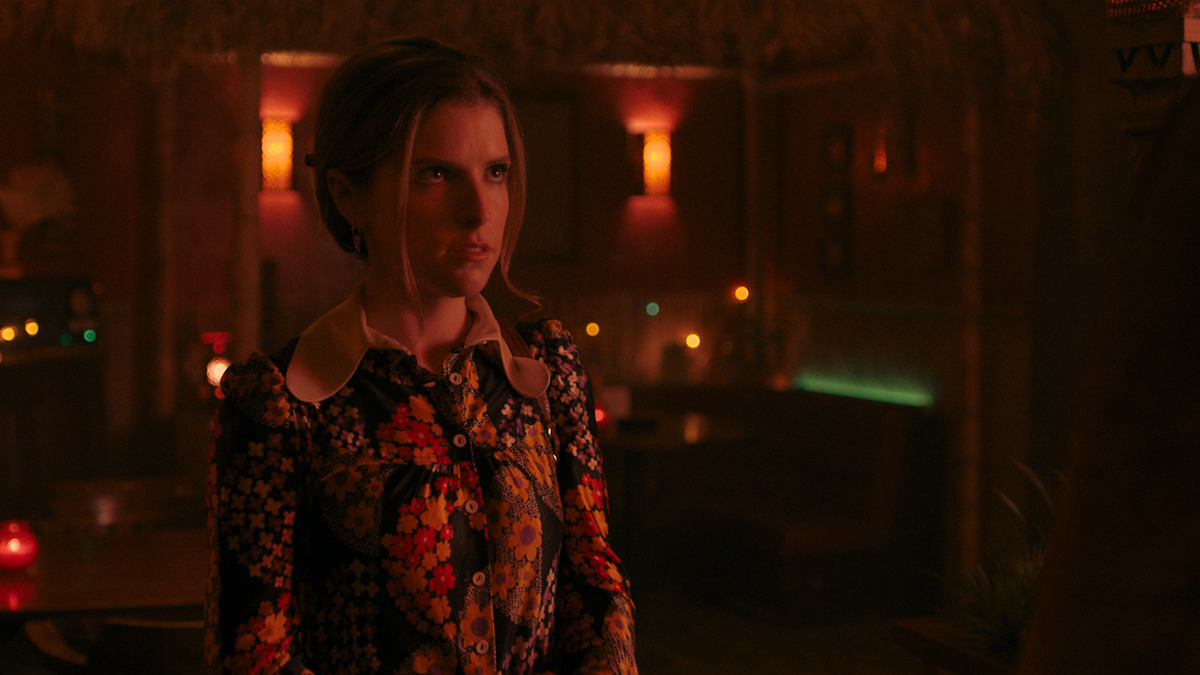Anna Kendrick’s directorial debut, Woman of the Hour, is out now on Netflix, but is it worth the watch? The true crime/thriller follows aspiring actress Sheryl Bradshaw (Kendrick) as a contestant on The Dating Show, a popular show that first aired in 1965. Set in Los Angeles in 1978 (with frequent time-jumps/backs), Bradshaw is unaware that contestant number three is the then uncaught serial killer, Rodney Alcala (played wonderfully by Daniel Zovatto). The sadistic killer was suspicious to any woman he met yet invincible to capture from law enforcement. Between the past, present, and future, one fact rings true throughout the film: he should not have gotten away with all of this. As promising as Kendrick’s debut seems, the pacing and questionable writing make the film seem like a pastiche of a true crime documentary.

The film begins through the lens of Alcala’s camera, on the first woman of the hour, Sarah (Kelly Jakle), establishing the film’s atmosphere of methodical terror, a testament to Kendrick’s directorial expertise. From there on, the film is interspersed with narratives of other women who have come across Alcala, one of whom attends the taping of the show and attempts to notify authorities. Nicolette Robinson plays Laura, the best friend of a woman who was raped and murdered by Alcala. A “cold case,” but not quite so when the killer is right in front of you. What’s notable about that scene of her recognition and harrowing fear is the moment after when Laura’s boyfriend attempts to mediate her worries by assuming that she is probably mistaking him. This is true to the reality of any woman who has attempted to come forward with assault or information of the act. In its most emotional moments, the film succeeds.
Rather than relying on gratuitous violence or sensationalism, Kendrick builds dread through everyday moments of fear: unwanted touches, dismissive attitudes, and the casual misogyny that pervades society. When the show’s host, Ed Burke, visits Sheryl’s dressing room, his invasive presence masquerades as casual professionalism, though every gesture from his measured positioning to his rehearsed smile emits silent threat. It is through these often subtle power plays that a far more unsettling picture of institutional sexism is detailed than would have come had the effort relied on overt, graphic violence. This was such a beautifully captured scene in the way in which predatory behavior is so often hidden behind a veil of professional politeness, the ways in which women so often find themselves in the precarious position of having to balance workplace relationships with maintaining one’s own boundaries.
Yet, the writing, again, copies all too well the conventions of any Netflix crime show. Over-relying on exposition heavy flashbacks and on-the-nose dialogue that undercuts the subtlety of Kendrick’s visual storytelling. It is a surprise, really, that Kendrick did not take up the pen herself, but there is room for her to write a screenplay for her next film.

Though imperfect, Woman of the Hour speaks volumes to Kendrick’s potential as a director. It is a provocative meditation on how the structures of society continue to protect predators and silence their victims. But it is also a shame that the film cannot get past its formulaic missteps to truly deliver on its promising premise.
2/5 Stars
